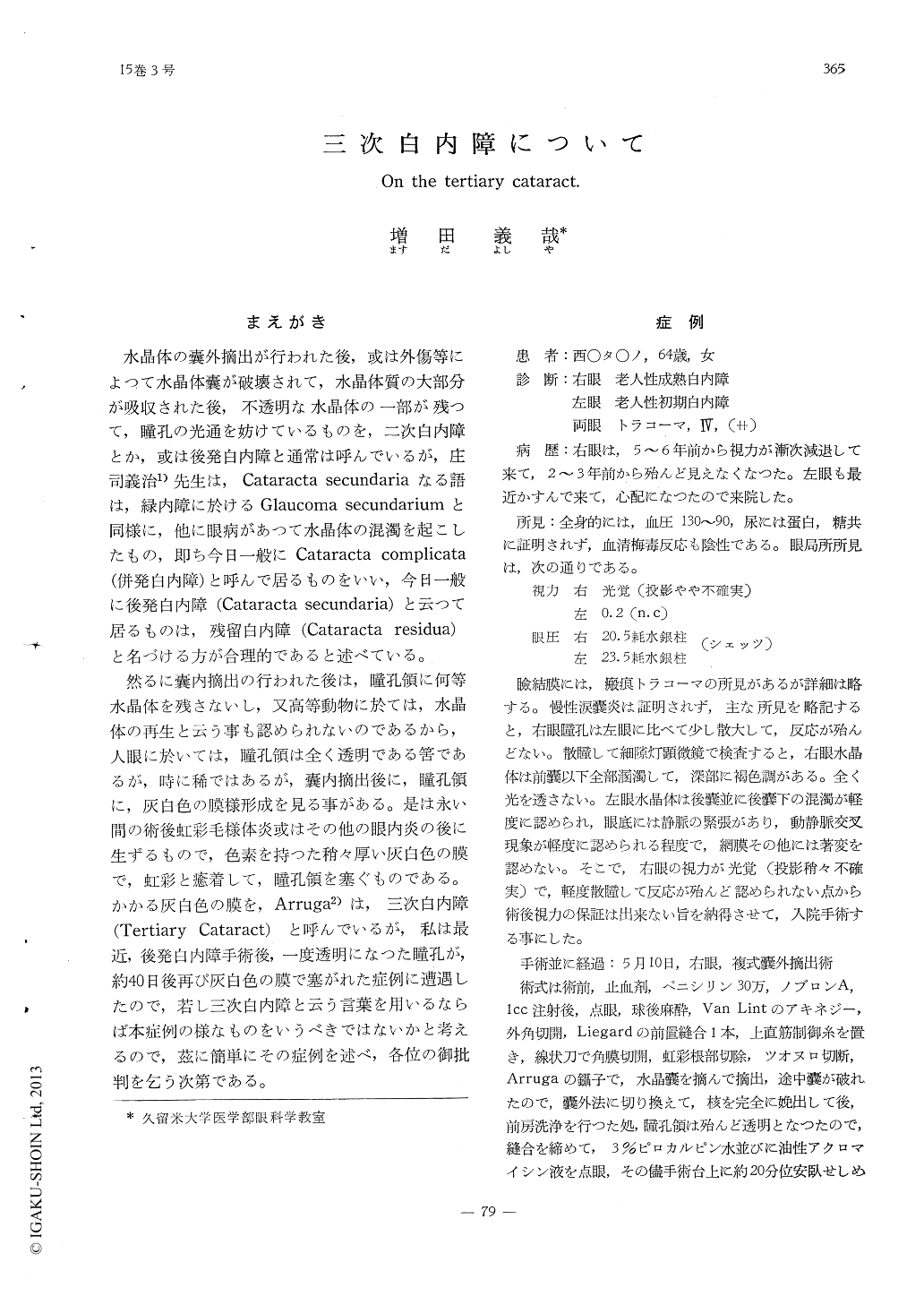Japanese
English
- 有料閲覧
- Abstract 文献概要
- 1ページ目 Look Inside
まえがき
水晶体の嚢外摘出が行われた後,或は外傷等によつて水晶体嚢が破壊されて,水晶体質の大部分が吸収された後,不透明な水晶体の一部が残つて,瞳孔の光通を妨けているものを,二次白内障とか,或は後発白内障と通常は呼んでいるが,庄司義治1)先生は,Cataracta secundariaなる語は,緑内障に於けるGlaucoma secundariumと同様に,他に眼病があつて水晶体の混濁を起こしたもの,即ち今日一般にCataracta complicata(併発白内障)と呼んで居るものをいい,今日一般に後発白内障(Cataracta secundaria)と云つて居るものは,残留白内障(Cataracta residua)と名づける方が合理的であると述べている。
然るに嚢内摘出の行われた後は,瞳孔領に何等水晶体を残さないし,又高等動物に於ては,水晶体の再生と云う事も認められないのであるから,人眼に於いては,瞳孔領は全く透明である筈であるが,時に稀ではあるが,嚢内摘出後に,瞳孔領に,灰白色の膜様形成を見る事がある。是は永い間の術後虹彩毛様体炎或はその他の眼内炎の後に生ずるもので,色素を持つた稍々厚い灰白色の膜で,虹彩と癒着して,瞳孔領を塞ぐものである。
According to Arruga, the tertiary catrract is a membraneous substance in the pupillary area, which is produced in the course of an inflammation in the iris and ciliary body after total extraction, but it is not right to call it a cataract by reason, that this membrane has no elements of the lens.
The case reported hear, however, should be called tertiary cataract, because it was the membraneous opacite in the pupil following discision of secondary cataract and was cons-tructed by some elements of the lens.

Copyright © 1961, Igaku-Shoin Ltd. All rights reserved.


